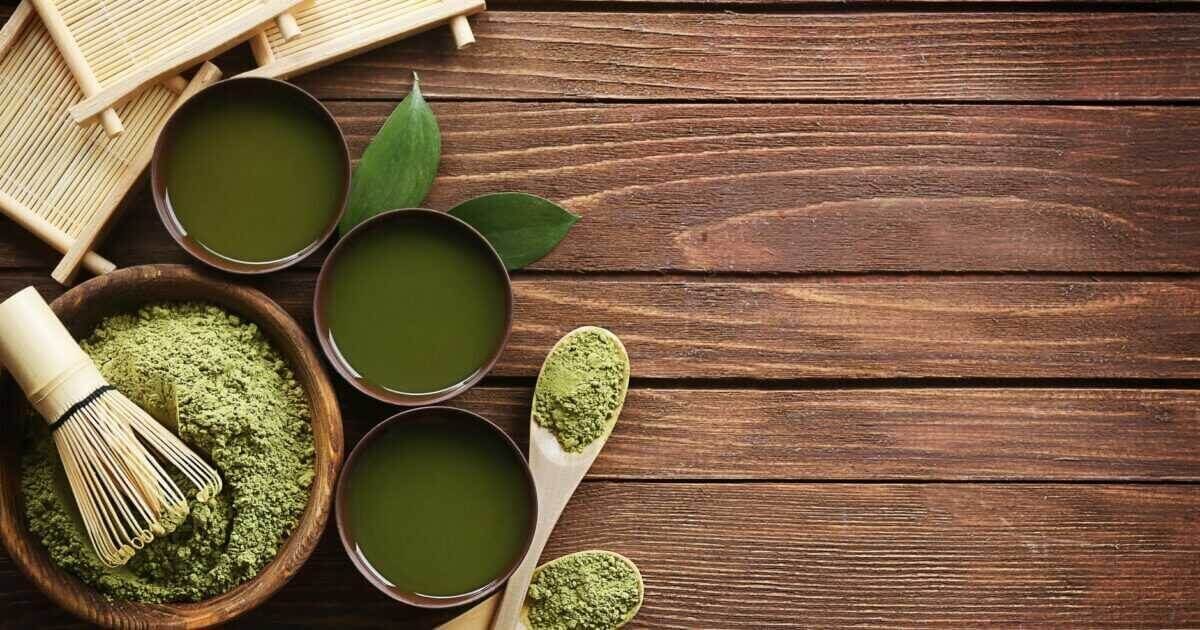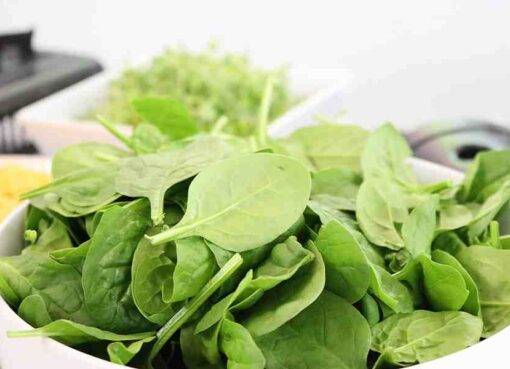Introduction
Matcha originates from the green tea plant. It differs from the green tea plant in the way it is cultivated and processed which is attributed to its changes in taste, quality, aroma, and nutrients.
Also, it is typically grown in the southeast areas of Japan whereas the green tea plantation has expanded all across the globe now.
Traditionally, matcha is a very environmental-centric plant, so the soil, topography, and climate have just got to be right to get a quality harvest.
In its last month prior to harvesting, the matcha plantation gets covered with an overhead structure to shield it from direct sunlight which slows down the process of photosynthesis.
The shaded area helps it to sustain high levels of theanine, an amino acid responsible for the mild yet sweet & savory flavor profile.
Such an environment also helps in the synthesis of chlorophyll which imparts vibrant light green color.
The darker the condition under which the tea grows, the better the grade of matcha. When it comes to harvesting, the best grades of matcha are cultivated in almost complete darkness.
After its harvesting, the matcha leaves are dried in an indoor environment again keeping them away from sunlight. The flavor of the highest quality matcha is sweet & smooth with its texture being super silky.
Stone grinding ‘tencha’ into matcha powder
The tencha is typically stone-grounded into a fine powder in Japan using specifically built granite stone mills. Grinding 30-40 grams of tencha might take up to an hour.
Unlike green tea where the leaves are steeped for a particular time in hot water until it’s the flavor & the aroma is extracted matcha tea is simply made by adding matcha powder into hot water, it doesn’t require steeping the leaves.
Matcha is broadly classified into 2 different grades
1) Ceremonial grade – It is the best matcha grade which is used in traditional ceremonies, it has a vibrant spring green color and is delicately sweet in flavor. It has a very fine texture, much like talcum powder. It is highly soluble in water and this grade is rarely used to make tea (or other culinary preparations) owing to its steep market price & low availability.
2) Culinary grade – It is further divided into the following grades depending upon its color, texture & flavor.
- Premium grade – it is light green in color with a fine texture. It blends well to make matcha latte & smoothie. It retains much of the health benefits with a rich nutritional profile of amino acids & anti-oxidants.
- Cafe grade – as the name suggests, this grade is more affordable and is generally used in café bars to make a variety of lattes, smoothies, shakes & blended coffee beverages. This grade also has a rich nutritional profile
- Classic grade – this grade powder is made from moderately colored green leaves but the texture is smooth. It has a slightly bitter taste but it blends easily to make different matcha-based preparations. This grade is relatively cheaper than its predecessor’s grades.
- Ingredient Grade – it has a thicker & slightly coarse texture with a strong & bitter taste. The powder is darkish green but still has a fair ability to blend in various preparations like matcha latte, smoothie, ice cream, brownies, etc. To maintain smooth consistency for preparation, this grade requires brisk whisking to avoid the formation of lumps.
- Kitchen Grade – It is the most affordable of them all. This powder is green with a darkish tone & is thicker than the other qualities of matcha. It has a strong pungent smell with a sour & bitter taste. This grade is used extensively in the mass production of matcha-based preparations along with chemicals & preservatives.
In some parts of the world, even the lowest-grade quality matcha may be more expensive than some of the best green tea varieties. Such is the pedigree of this type of tea.
Reasons for variation in matcha grade
The different quality grade corresponds to the varied chemical composition of matcha. Oxidation is the primary factor in determining its different grades.
Matcha’s quality also gets easily compromised if it is exposed to sunlight, especially in the last month prior to harvesting.
Its quality is also affected by agricultural climatic factors like the amount of sun and rain its cultivation is exposed to, fertilization quality, and plant protection measures during its growing & harvesting period.
Lastly, not ensuring proper soil, topography, and climate also hamper the matcha grade.
Due to the presence of polyphenols, flavonoids, vitamin C & caffeine in abundance, it is one of the best sources of anti-oxidants on this planet.
To give you an analogy, it is a minefield of anti-oxidants that contains over 50 times more antioxidants than spinach, 45 times more than broccoli,10 times more than walnuts, and 6 times more than dark chocolate.
Such a nutritional profile gives matcha diverse pharmacologic effects on humans.
- It exhibits an anxiety & stress-reducing effect in humans.
- It boosts your mental health by significantly improving tasks measuring basic attention, information processing * working memory
- It has a high concentration of caffeine which helps our body to improve nutrient absorption. For the sake of comparison, the content of green tea can have up to 24 mg/gm, the content of coffee can have up to 12 mg/gm while matcha powder can have up to 44 mg/gm. Caffeine is associated with maintaining better cognitive & undisrupted attention over a long period of time
- Its rich antioxidant profile helps prevent floating radicals from damaging our cells thereby helping in our overall well-being and staying youthful & energetic.
- It has the potential to inhibit cancer cell growth & prevent metastasis.
- It may enhance our cardiovascular activities & strengthen blood vessels.
- Its antioxidant and anti-inflammatory action offers the potential for preventing conditions of neurodegenerative conditions.
- Vitamin C is a powerful exogenous antioxidant that reinforces the immune defense of our body.
- Green tea’s immunomodulatory characteristics and antiviral impact may help prevent and control immune responses in infectious illnesses such as COVID-19.
FAQs
- Does matcha give you energy?
Yes, the fact that matcha has an abundance of rich anti-oxidants and caffeine, and you will feel energized within minutes of taking any matcha drink. Although, ingesting any matcha-based preparation will also give you some benefits it will take a longer time for matcha to kick into action due to the slow absorption. For instant energy, a matcha-based drink is preferred over a matcha-based food.
- Does matcha make you slim?
Although there are no clinical studies to prove that matcha helps in weight loss matcha with its rich nutrient profile does speed up your rate of metabolism.
- Can dogs have matcha?
No… there have been no medical studies that may suggest that dogs can consume matcha safely.
- Does matcha have more caffeine than coffee?
Yes, to give the answer in numeric figures, coffee can have up to 12 mg/gm of caffeine while matcha can have up to 44 mg/gm of caffeine.
- How much matcha per day can be consumed safely?
Well, there is no medical evidence about what should be recommended or the extreme quantity of matcha that can be safely taken but since matcha has a very high concentration of caffeine, hence, read the label on your source of matcha (and possibly caffeine content) and accordingly, limit your matcha ‘caffeine’ consumption in such a way that you don’t exceed your caffeine intake by over 500 mg in a day.
Citation
https://www.ncbi.nlm.nih.gov/pmc/articles/PMC7796401/
https://www.mdpi.com/2072-6643/10/10/1468
https://kenkomatcha.com/pages/matcha-green-tea-benefits




I am currently writing a paper that is very related to your content. I read your article and I have some questions. I would like to ask you. Can you answer me? I’ll keep an eye out for your reply. 20bet
Can you be more specific about the content of your article? After reading it, I still have some doubts. Hope you can help me. https://accounts.binance.com/de-CH/register?ref=S5H7X3LP
Can you be more specific about the content of your article? After reading it, I still have some doubts. Hope you can help me. https://accounts.binance.com/fr/register?ref=WTOZ531Y